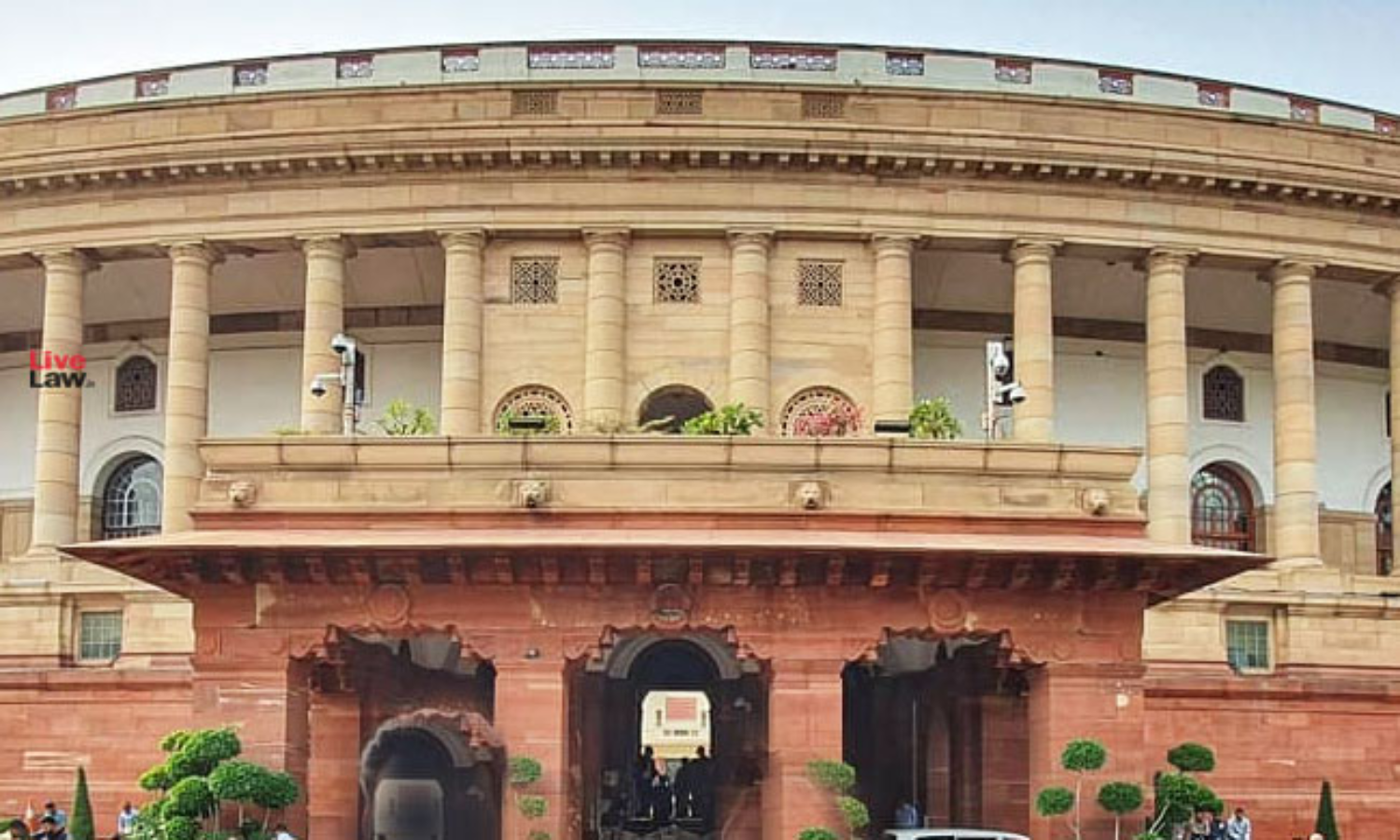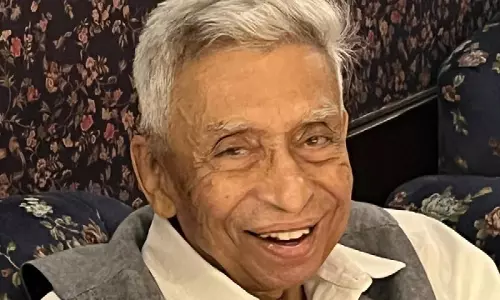Borrowing Powers Of The Union And States In India: Time To Reflect And Revisit

Introduction The global pandemic has left no stone unturned to affect everything on its path, and economic dynamics are certainly not an exception to its unwavering captures. While predictions abound that the world economy may be pushed to its brink, opinions also resonate that developing economies may witness sharper recessions, with IMF projecting India's growth rate at a dismal...
Introduction
The global pandemic has left no stone unturned to affect everything on its path, and economic dynamics are certainly not an exception to its unwavering captures. While predictions abound that the world economy may be pushed to its brink, opinions also resonate that developing economies may witness sharper recessions, with IMF projecting India's growth rate at a dismal 1.9% in fiscal year 2020. As the government and Reserve Bank of India attempt to put the pedal to the metal to revive the weakening economy, it recently announced a raise of the Union government's gross borrowing to Rs. 12 lakh crores, jumping 54% from the budgeted Rs. 7.8 lakh crores. This came after the finance ministry's decision to allow 28 states to borrow a cumulative of Rs 3,20,481 crores from markets on an ad-hoc basis for the first nine months of the current fiscal year.
One may ponder: What is the source of governments' borrowing powers? Are there any redlines drawn on such powers? What mechanism regulates the borrowing of centre and states? It is here that we turn to one of the under-discussed and under-debated parts of the Indian Constitution i.e. Arts. 292-293 in Chapter XI dealing with Financial Relations.
Borrowing Powers of the Union
Art. 292 is the adapted version of s. 162 of the Government of India Act, 1935 ("Act"). The Central Government ("Centre") can borrow within such limits, if any, as may be fixed by Parliament by law. The executive power of the Union extends to borrowing upon the security of the Consolidated Fund of India (essentially the resources of the Union) within such limits, if any, as may from time to time be fixed by Parliament by law and further to the giving of guarantees within such limits, if any, as may be so fixed. Art. 292 is to be read together with entries 35 and 37 of List I of the 7th Schedule by which Parliament commands exclusive power to make laws with respect to 'public debt of the Union' and 'foreign loans'.
It is fascinating that Art. 292 does not obligate the executive to obtain statutory mandate from Parliament to borrow funds. Rather, it merely empowers the Parliament to make a law, if it so desires, to define the limits and conditions subject to which loans can be raised by the Centre. However, the Parliament has kept this legislative power to control the borrowing activities of the Centre at bay. As a result, Centre's borrowings are premised entirely on its executive authority i.e. borrowings during the year are reflected in the Budget and approval of Budget by Parliament is essentially regarded as approval of the Centre's borrowing schism as well. As such, there is no quantitative bar to the borrowing powers of the Centre.
Borrowing Powers of the States
Art. 293 is again, an adapted version of s. 163 of the Act. Clauses (1) and (2) of Art. 293 substantially replicate sub-s. (1) and (2) of s. 163 of the Act while Clauses. (3) and (4) reproduce sub-s. (3), except with the omission of the words 'borrow outside India'. Sub-s. (4) (giving Governor-General the discretion to decide the reasonability of withholding consent to the states for borrowing loans) was altogether omitted in the draft Constitution.
Granville Austin in his book Constitution of India - Cornerstone Of A Nation" (9th ed, at p. 233), categorically pointed out how the states' failed to realize the trappings of Art. 292 during its adoption in the Draft Constitution:
"The Assembly adopted the provisions in the Draft Constitution concerning "borrowing" with little difficulty. It will be recalled that the provincial governments with outstanding loan from the Union or its predecessor Government were not to borrow without Union's consent. When this Article was under consideration, seven out of the nine provinces had outstanding loans. Yet, the provincial governments evidently did not believe that this put them unduly in the grip of the Union and did not oppose either the Article or the proviso. Nor, it seems, has the working of this Article during the last decades been detrimental to the interests of the States".
Sources: Art. 293(1)
Art. 293 demarcates the twin sources available to the states for borrowing: (i) It may directly borrow from sources within the territory of India, upon the security of the Consolidated Fund of the State [cl. (1)]; and (ii) it can draw from the Government of India by way of loan [cl. (2)].
Limitations: Art. 293(2)-(4)
However, unlike the Centre's unbridled borrowing powers, state's borrowing powers are circumscribed with limitations: (i) they cannot borrow from sources outside India; (ii) the executive power of the state extends to borrowing on the consolidated fund of the state subject to the limitations imposed by law enacted by the state legislature. In that vein, Article 293 is to be read with Entry 43 of List II which gives the State Legislature the exclusive power to legislate relating to the 'public debt of the State', in essence subject to the limitations as discussed.
In addition, if the Centre is a guarantor to an outstanding loan of the state, a fresh loan cannot be raised by the state unless consent is obtained from the former. Similarly, the Centre can itself offer a loan to the states (the sum of which is charged on the Consolidated Fund of India). Till the time such a loan subsists, the state cannot borrow further without the Centre's consent. Art. 293(4) permits the Centre to prescribe the terms of such consent.
Although there is no purpose specific or quantitative prescription to be abided by, as a natural corollary of this legislative scheme, the states are under significant hold and control of the Centre. The consent of the Centre under Cl. (2) - (4) is the only fuel to ignite the state's borrowing vehicle further. As all states borrow from the Centre, no state today can raise a loan without obtaining the much-needed consent from the Centre.
Mathew v. Union of India: A Sole-Standing Precedent
The judgment of the Kerala High Court in Mathew v. Union of India remains the lone instance of judicial exposition of Arts. 292-293 by courts in India. Dealing with the limited question of whether the provisions embodied in Articles 292 and 293 of the Constitution debar the Central and the State Governments from borrowing any money beyond the amount standing to their credit in the Consolidated Fund, the court held:
"A perusal of Article 292 shows that in exercise of the executive power, the Central Government is empowered to borrow "upon the security of the Consolidated Fund of India." The limits, if any, can be "fixed by Parliament." Such limits can be imposed only "by law." It is further clear that such law can impose limits even in respect of giving of guarantees. Similarly, by Clause (1) of Article 293, the States are placed in an identical position. In other words, the two provisions empower the Governments of India and the States to borrow money. The Constitution does not say that the borrowing has to be 'upto' the amount of money available in the Consolidated Fund. The framers have used the expression 'upon the security of. Still more, it is only by law that the Central and the State Legislatures can impose limits upon the borrowing. Such limits are not embodied in Articles 292 and 293 of the Constitution. Thus, the contention that the two provisions place an embargo on the power of the executive to borrow cannot be sustained. In fact, the plain language suggests that the two Articles primarily contain enabling provisions. These authorize the respective Governments to borrow. Also to enact laws to regulate the borrowing. These do not place a limit or an embargo."
Characterizing Arts. 292-293 as mere enabling provisions in the Indian Constitution, the court emphasized that limits on borrowing powers, if any, could only be perpetuated by the Parliament for the Centre and the state legislatures for respective states.
Comparative Lens
U.S.
The Congress has unlimited power to borrow on the credit of the United States by virtue of Art. 1, s 8(2) of the Constitution. It has the liberty of choice in terms of means and methods of the exercise of such power as well in terms of purpose, as long as it is one for which the Congress may be lawfully authorized to spend finances. Although the Congress has the power to decide on the terms of payment of amounts so borrowed, it is on the same pedestal as a private borrower when it comes to repudiation of obligations under the loan contract, except in cases of exercise of some paramount power, for example, war power. The states have no locus to control the borrowing power of the federal government, whether by taxation or otherwise, without its consent.
This Constitution leaves the borrowing by the States on the credit of their own resources, to be governed by the State Constitutions.
Canada
Canada replicates the American legal framework for borrowing powers as s. 91(4) of the British North America Act gives the Dominion exclusive power in relation to "the borrowing of money on the public credit". However, s. 92(3) limits the borrowing power of the provinces to the sole credit of the Province.
Australia
Under s. 51(iv) of the Australian Constitutional Act, 1900, it was the Commonwealth Parliament that exercised the power of borrowing money on the credit of the Commonwealth. However, the insertion of s. 105A by the Constitution Alteration (State Debts) Act, 1929 established a representative body i.e. the 'Loan Council' comprising representatives of both the Commonwealth and state governments. This served as a special purpose vehicle in order to avoid competition between the Commonwealth and the State Governments in the loan market while exercising borrowing powers of both the Commonwealth and State governments. As a result, the Commonwealth's power to borrow independently ceased, except for defence purposes. Nonetheless, the borrowing power of the Commonwealth is paramount and the entire transaction is outside the jurisdiction of the states. Even interest derived from loan bonds issued by the Commonwealth is immune from state taxation.
Prof. Wheare in his treatise Federal Government (1951, at p. 104), termed the establishment of the Loan Council as a unique occurrence in the history of financial relations between the Centre and states:
"The establishment of the Loan Council in Australia, an institution for compulsory cooperation between general and regional governments, super-imposed upon the federal system, is a unique event in the history of the financial relations of general and regional Government in a federation".
The Way Ahead
Seventy years into independence, neither the Parliament nor any of the state legislatures in India have opted to exercise the legislative power to regulate borrowing powers under Art. 292 and Art. 293 respectively. The Eleventh Finance Commission proliferated a useful recommendation in this respect:
"A time has come when, as a part of the overall thrust towards fiscal responsibility, concrete steps are taken under the provision of Articles 292 and 293. In particular, Parliament and respective State Legislatures may consider fixing limits on total borrowing as well as on guarantees to be given to them".
Many may argue that the Parliament has in-fact, passed Fiscal Responsibility and Budget Management Act, 2003 (Act 39 of 2003). However, it comes as no surprise that the provisions of this legislation are far away from being implemented in their form itself, let alone their implementation, in substance.
As we face an unprecedented economic crisis which may make or break the revival of the Indian economy, it is necessary that the Centre and states enact a fiscal responsibility legislative measures that prescribe specific annual targets with a view to eliminating the revenue deficit and reducing fiscal deficits based on the basis of careful monitoring of borrowings and guarantees, within the framework of their fiscal responsibility legislation. It is also necessary that states consider determining tangible levels on the growth of debt and contingent liabilities.
Finally, the time is ripe to let the states access the market directly for their borrowing requirements. To ensure this strategy reaps fruit, India can tread on Australia's footsteps and establish an independent body such as the Loan Council adequately represented both by Centre and the states to fix and supervise the overall limit to which states can borrow annually from all sources. This will also avert any detrimental competition to the Centre's borrowing ventures by entry of states into the market.
Views Are Personal Only
[The author is a final year undergraduate student at ILS Law College, Pune. He may be reached at kolhevarad27@gmail.com]




